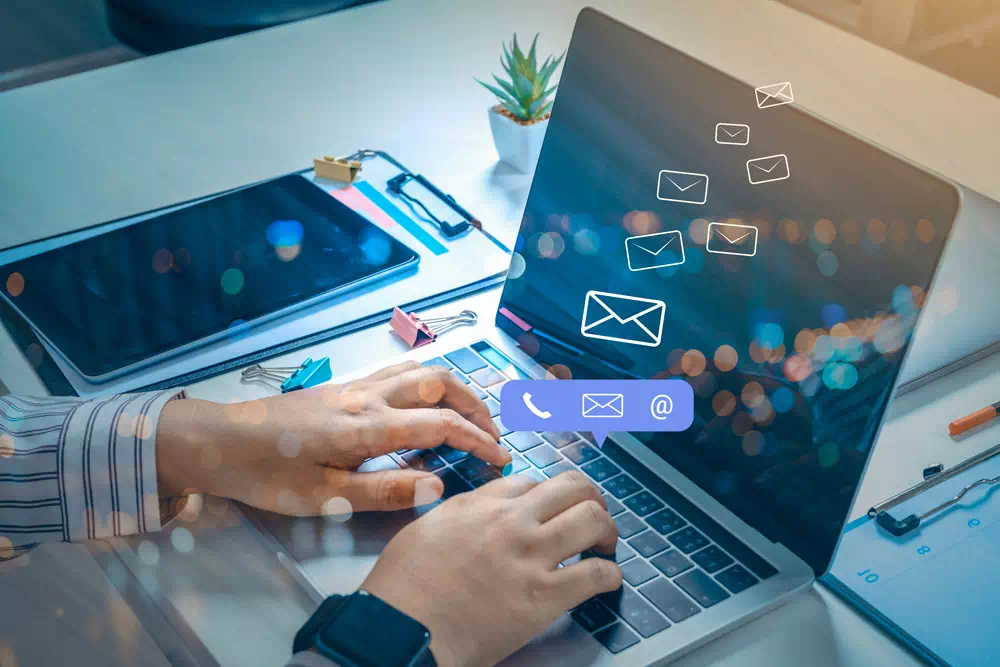Strategies, Benefits, and Best Practices for Maximum Engagement

In today's digital landscape, Email Marketing has emerged as a cornerstone of successful communication and business growth. This blog explores the power of email marketing, providing insights into strategies, tips, and best practices to help businesses connect, engage, and convert their audience through effective email campaigns.
What is Email Marketing?
Email marketing is extremely important for businesses today, it is the act of sending a commercial message, typically to a group of people, using email. In its general sense, every email sent to a potential or current customer could be considered email marketing. It involves using email to send advertisements, request business, or sales or donations.
In a simple saying it is a form of marketing that can make the customers on your email list aware of new products, discounts, and other services. It can also be a softer sell to educate your audience on the value of your brand or keep them engaged between purchases.
Some of the Major Benefits of Email Marketing:
- It's inexpensive: Email marketing is very cost effective compared to other marketing channels like print or TV advertising. You only pay for your email service provider.
- It's targeted: You can segment your email list by customer attributes like location, age, purchase history, etc. This allows you to customize your messages to specific audiences.
- It builds relationships: Regular email communication helps to build long-term relationships with your customers. You can nurture leads and demonstrate value over time.
- It drives revenue: Email marketing is a proven driver of sales and ROI. According to studies, for every $1 spent, email marketing generates an average of $42 in sales.
- It's trackable: You can see metrics like open rates, click-through rates, and conversions to gauge audience engagement and improve your campaigns over time.
- It's flexible: You have many options for creating and distributing email campaigns to meet your needs - newsletters, autoresponders, promotional blasts, and more.
- It reaches customers directly: Email provides direct access to your customers and subscribers without relying on algorithms from social networks.
- It encourages sharing: Well-designed email campaigns with valuable content or offers can spur social sharing, extending your reach.

For Effective Email Marketing, You Need to:
- Choose an email service provider like Mailchimp, Constant Contact or Campaign Monitor. They provide templates, automation, and analytics.
- Build a quality email list with proper opt-in procedures and segmentation.
- Design simple but visually-appealing emails that are mobile responsive.
- Include a clear call-to-action in each email like "Shop Now" or "Learn More".
- Send relevant and valuable content or offers based on your audience's needs and interests.
- Optimize and improve your campaigns through testing and tracking metrics.
- Maintain a consistent email schedule so your subscribers know when to expect your messages. But don't oversaturate them.
- Provide value with each email before pitching or promoting to your list. A good rule of thumb is 80% value, 20% pitch.
- Respect your subscribers' inbox by avoiding spammy or salesy content. Provide useful information and make unsubscribing easy.
Our team in StepaceMarketing provide this service and will help you to do it all for any kind of campaigns you want to start, here's a summary of tasks you need to accomplish:
For Email Marketing Campaigns You Need to:
• Develop exclusive offers, discounts or coupons specifically for your email subscribers. For example, 10% off your next purchase. This gives them an incentive to open your emails and engage with them.
• Create special email newsletters highlighting new products, sales or other promotions. For example, a weekly "Deal of the Week" flyer includes one special item at a discounted price.
• Send out private surveys or polls to get feedback and gather engagement from your email audience. Then use the results to customize future email content and offers.
• Offer special giveaways, contests or sweepstakes exclusively to your email subscribers. These actions increase the rate at which people respond to emails and encourage content sharing.
For Media Campaigns You Need to:
- Create special content like blog posts, videos or social media posts to promote the campaign. For example, if you have a giveaway, create a short behind-the-scenes video highlighting the prizes.
- Boost social media posts or run social media ads to increase visibility for your campaign. This expands your reach beyond just email subscribers.
- Pitch media outlets like relevant industry blogs, podcasts, YouTube channels or news sites to help promote your campaign. Offer to provide an exclusive discount or giveaway for their audience in exchange for coverage.
- Run a paid advertising campaign on platforms like Google Ads, social media or display networks to promote your message to a wider target audience.
- Create special landing pages, banners or other graphics to visually represent your campaign. Use these on your website, in emails, on social media and in ads.
Finally, and in short, the key is creating content and experiences that are exclusive to each campaign and providing real value and incentives for your audiences. The more targeted and compelling your campaigns are, the higher the response and engagement rates will be.
